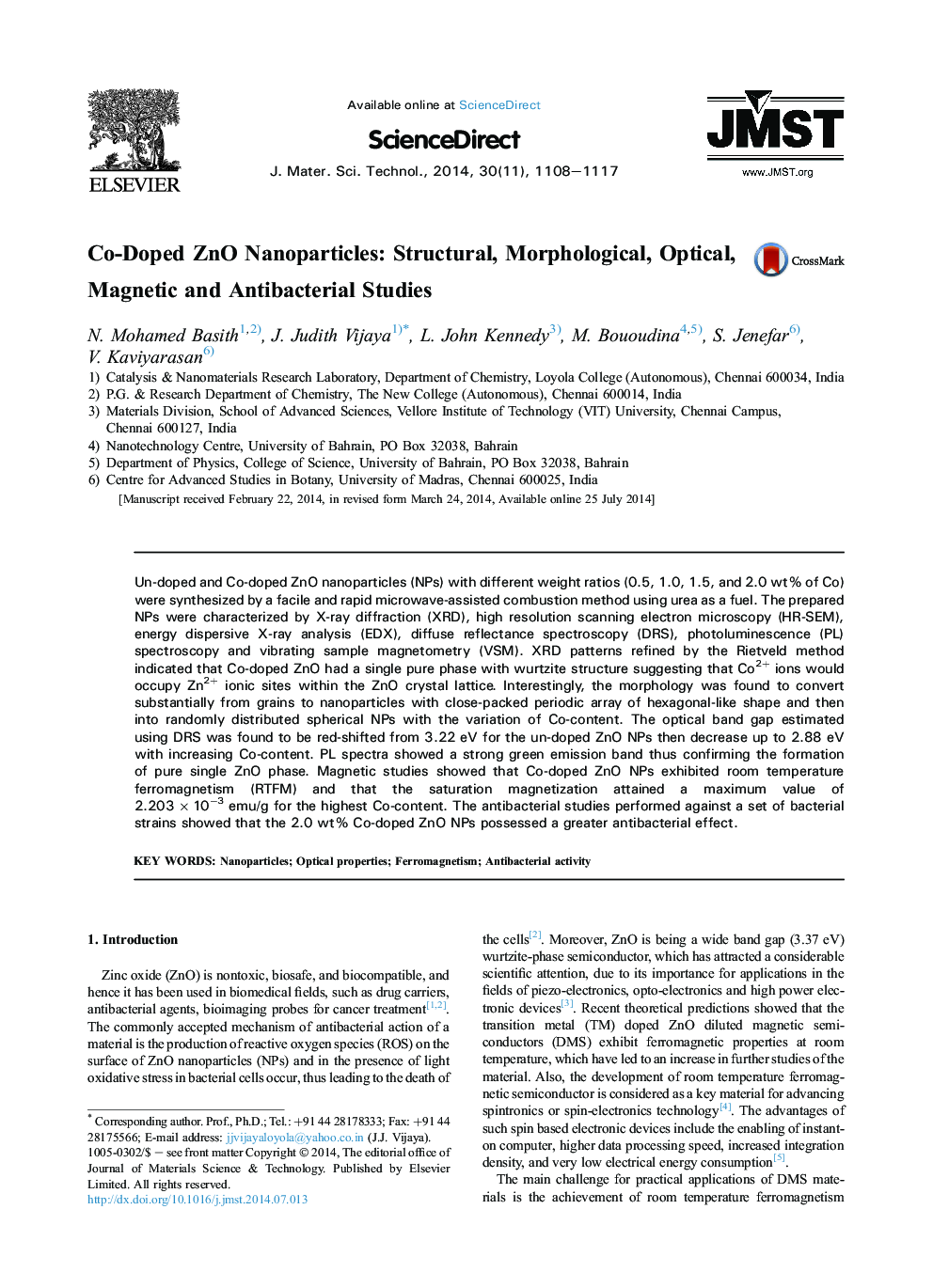| Article ID | Journal | Published Year | Pages | File Type |
|---|---|---|---|---|
| 1556008 | Journal of Materials Science & Technology | 2014 | 10 Pages |
Abstract
Un-doped and Co-doped ZnO nanoparticles (NPs) with different weight ratios (0.5, 1.0, 1.5, and 2.0Â wt% of Co) were synthesized by a facile and rapid microwave-assisted combustion method using urea as a fuel. The prepared NPs were characterized by X-ray diffraction (XRD), high resolution scanning electron microscopy (HR-SEM), energy dispersive X-ray analysis (EDX), diffuse reflectance spectroscopy (DRS), photoluminescence (PL) spectroscopy and vibrating sample magnetometry (VSM). XRD patterns refined by the Rietveld method indicated that Co-doped ZnO had a single pure phase with wurtzite structure suggesting that Co2+ ions would occupy Zn2+ ionic sites within the ZnO crystal lattice. Interestingly, the morphology was found to convert substantially from grains to nanoparticles with close-packed periodic array of hexagonal-like shape and then into randomly distributed spherical NPs with the variation of Co-content. The optical band gap estimated using DRS was found to be red-shifted from 3.22Â eV for the un-doped ZnO NPs then decrease up to 2.88Â eV with increasing Co-content. PL spectra showed a strong green emission band thus confirming the formation of pure single ZnO phase. Magnetic studies showed that Co-doped ZnO NPs exhibited room temperature ferromagnetism (RTFM) and that the saturation magnetization attained a maximum value of 2.203Â ÃÂ 10â3Â emu/g for the highest Co-content. The antibacterial studies performed against a set of bacterial strains showed that the 2.0Â wt% Co-doped ZnO NPs possessed a greater antibacterial effect.
Related Topics
Physical Sciences and Engineering
Materials Science
Materials Chemistry
Authors
N. Mohamed Basith, J. Judith Vijaya, L. John Kennedy, M. Bououdina, S. Jenefar, V. Kaviyarasan,
